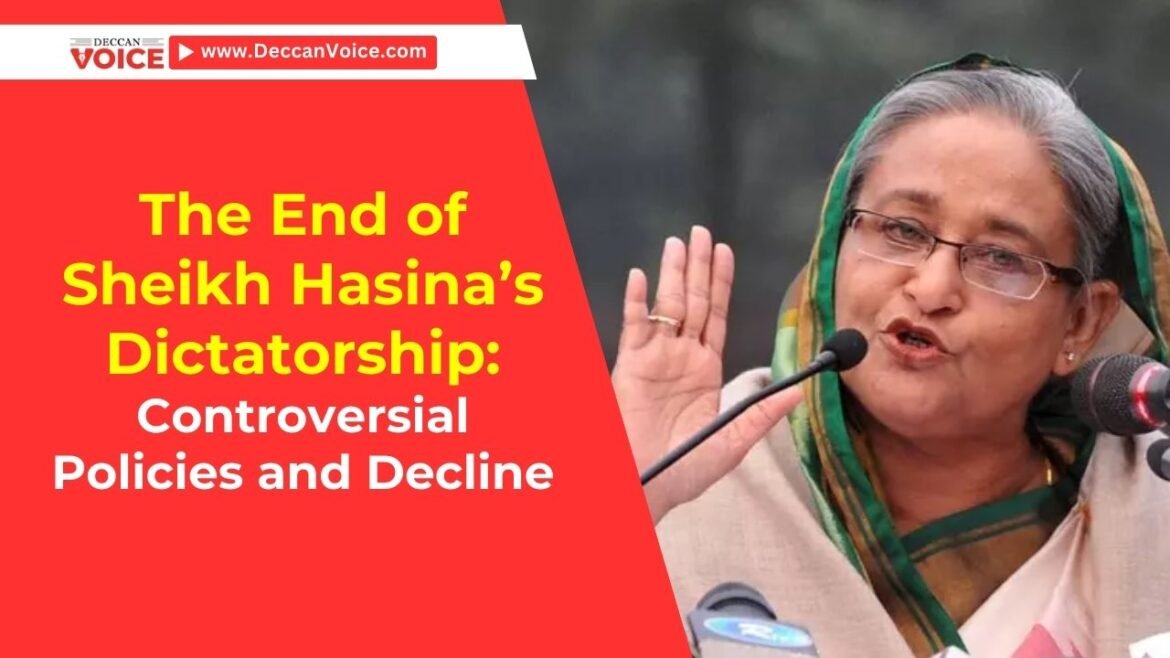Table of Contents
Bangladesh Prime Minister Sheikh Hasina has stepped down from office, marking the end of 15 years of what the opposition and critics have labeled as “authoritarian rule.” This significant political shift has triggered widespread celebrations across the nation.
End of Hasina Era
General Waker-uz-Zaman, the Chief of Army Staff, announced on Monday that an interim government would take charge immediately, urging citizens to trust the army during this transitional period. Hasina’s resignation followed weeks of intense protests against government job quotas, which escalated into nationwide unrest, resulting in at least 280 deaths and thousands of injuries as the government cracked down on demonstrators.
Reports suggest that Hasina fled the country on Monday in a military helicopter to India, a strong ally. Videos from local media showed throngs of people storming the prime minister’s residence, celebrating and ransacking the property.
The Trigger: Protests and Clashes
The unrest peaked on Sunday when more than 90 people were killed in violent clashes between security forces and demonstrators demanding Hasina’s resignation. Police used rubber bullets and tear gas against massive crowds in Dhaka’s Shahbagh Square, and protesters in Sirajganj attacked a police station, killing at least 13 officers.
The government imposed a shoot-on-sight curfew and deployed police and military units to restore order. However, by Monday morning, thousands of people defied the curfew and continued to march. Reports of clashes outside the capital emerged, but by noon, a notable change occurred as protesters handed flowers to the military, and officers embraced the demonstrators, signaling a swift turn in the crisis.
Background of the Protests
The demonstrations initially started in July in Dhaka, led by students angered by a court’s decision to reinstate a controversial job quota scheme, which had been abolished in 2018. The policy reserved 30% of government jobs for descendants of veterans from the 1971 independence war, many of whom are linked to Hasina’s Awami League party. Additional quotas for women, disabled people, and ethnic minorities left only about 3,000 positions open for competitive exams, with 400,000 graduates vying for these jobs. This sparked widespread frustration, especially since a significant portion of the population is unemployed.
The protests intensified after Hasina referred to the demonstrators as “Razakars,” a term for collaborators with Pakistan during the 1971 war. Despite the Supreme Court’s decision to abolish the quota policy on July 21, the unrest persisted, with protesters calling for Hasina’s resignation and justice for those killed.
Controversial Policies and Governance
Sheikh Hasina, the world’s longest-serving female head of government, faced numerous allegations throughout her tenure. Critics accused her of suppressing opposition and dissent, orchestrating disappearances, and extrajudicial killings. Despite winning her fourth consecutive term in office this year, allegations of election rigging and media manipulation plagued her leadership.
Hasina’s government faced significant backlash for its policies affecting students and religious communities. Her administration’s crackdown on student protests and interference with religious personal laws drew widespread condemnation. Furthermore, her government was criticized for corruption, particularly in electoral processes, and for harshly punishing religious groups.
Unpopularity and Political Impact
The discontent culminated in large-scale protests, with slogans labeling Hasina as a dictator. Analysts speculated that the mounting pressure from student protests would be insurmountable for her administration. The events leading to her resignation were seen by many as a second independence movement for Bangladesh, freeing the nation from what they described as Hasina’s tyranny.
Political analyst Mubashar Hassan, in exile since 2018, described the moment as incredible and akin to a second independence for Bangladesh. He expressed hope for returning to his homeland soon, a sentiment shared by many Bangladeshis celebrating the end of Hasina’s rule.
Sheikh Hasina’s controversial policies, authoritative governance, and the ensuing public outcry culminated in a historic change for Bangladesh, ending an era marked by significant political and social turmoil.



